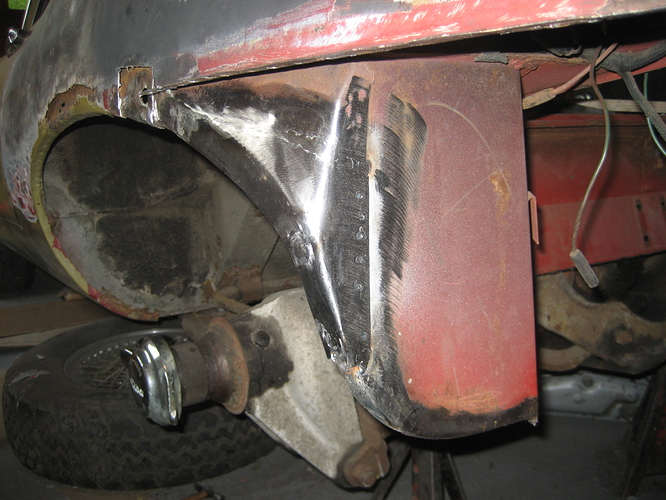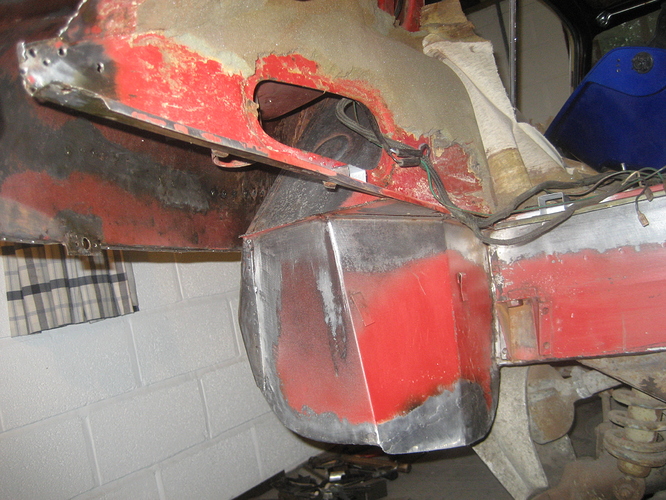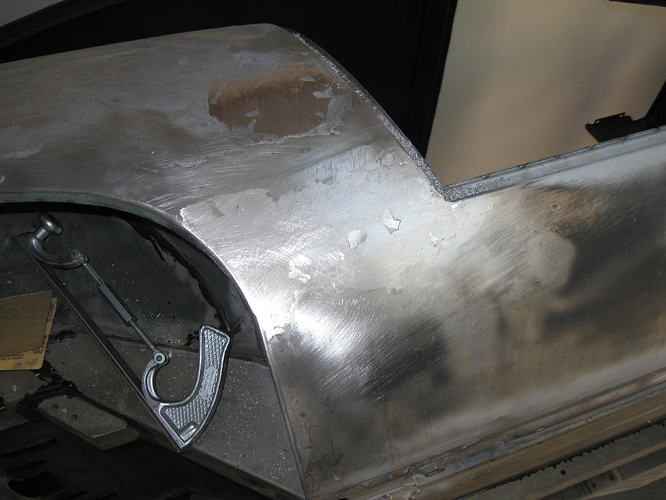Thanks. I rarely leaded every inch of my seams as continued application of lead often just ruined prior work. I had the advantage of a spit, so most work was horizontal. I would check the perimeter of the lead as laps are common. I’d need to peel, file and feather to make sure the edges were adhered. There is a lap in the picture, for instance. The lead was for strength, not for originality.
These are great shots Paul…thanks…I need to cut in replacement “boomerang” panels…these photos help…
Joe B. '69 FHC
Wow, Paul: you had to flay yours to the bone!
Great job of rebuilding the car!
Thanks Paul,
I thought I had bought a good one, but found out it was mostly filler over slide hammer holes:-(
Paul
That’s also a common problem when slinging all new lead especialy when the buildup exceeds 1/8”, ie slight depressions left after filing. There is a technique to address it though. You carefully reheat the filed area to the precise point at which it takes on a brighter shine while simultaneously heating solder in a slush pot just to the point of liquidus then quickly scoop up the barely solid solder with a steel spatula to slap it onto the leaded area on the car. It’s a bit of a tricky manoeuvre that gets easier with practice.
Actually, I was incorrect saying I didn’t lead the seams - I did the seams. In cases when there there was going to be plastic filler anyway it wasn’t worth the refile job as well as the careful relead for small areas. I had plenty of practice…
That’s a pretty big area of lean on that quarter as there is a new panel under there in addition to the seam at the sill.






